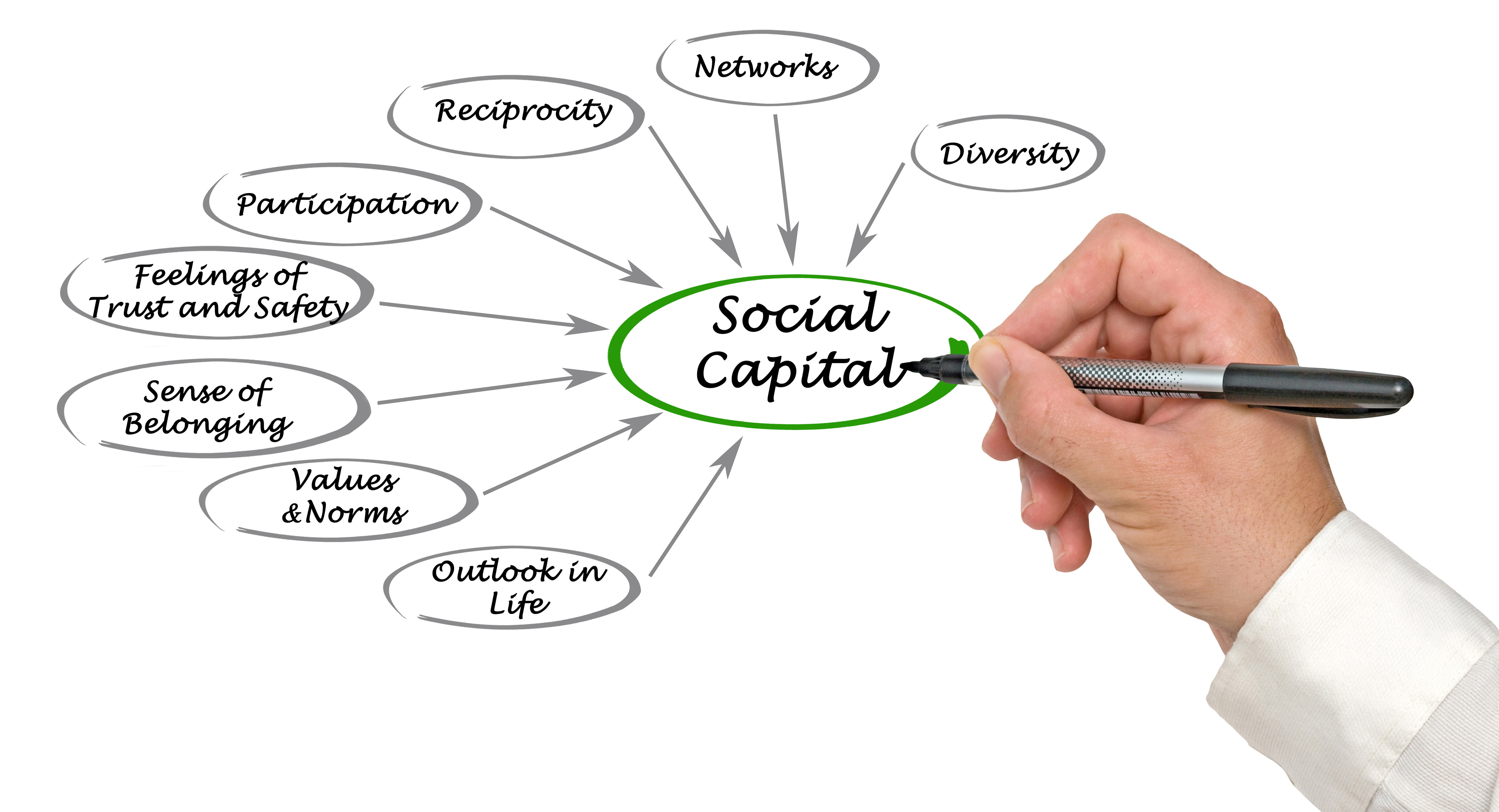Table of Contents
1. Introduction
1.1 Definition
Social capital refers to the resources embedded within social networks, including interpersonal relationships, trust, and shared norms, that enable individuals and groups to achieve their goals.
1.2 Importance
In an increasingly globalized and competitive landscape, social capital acts as a valuable asset, providing access to opportunities, information, and support that might otherwise be inaccessible.
2. Types of Social Capital
2.1 Bonding Social Capital
Bonding social capital is characterized by strong ties within homogeneous groups, such as family, close friends, or colleagues. These relationships offer emotional support, solidarity, and a sense of belonging.
2.2 Bridging Social Capital
Bridging social capital involves connections across diverse social groups. These weak ties provide access to new information, perspectives, and resources, fostering innovation and social mobility.
2.3 Linking Social Capital
Linking social capital refers to connections between individuals or groups and formal institutions or authorities, such as government agencies or business organizations. These ties facilitate access to resources and opportunities outside one’s immediate social circle.
3. Benefits of Social Capital
3.1 Professional Advancement
Social capital plays a crucial role in career development, providing access to job opportunities, mentorship, and referrals. Strong professional networks enhance visibility, credibility, and collaboration in the workplace.
3.2 Personal Well-being
Beyond professional success, quitch.net contributes to overall well-being by fostering a sense of community, belonging, and social support. Strong social ties reduce stress, loneliness, and isolation, promoting mental and emotional resilience.
3.3 Community Development
At the community level, social capital strengthens civic engagement, collective action, and social cohesion. Connected communities are better equipped to address common challenges, advocate for change, and promote social justice.
4. Building Social Capital
4.1 Networking
Networking events, professional associations, and social gatherings provide opportunities to expand one’s social network and cultivate meaningful relationships. Actively engaging with others, sharing resources, and offering support are key strategies for building social capital.
4.2 Volunteering
Volunteer work not only benefits the community but also fosters social connections and a sense of purpose. By collaborating with others towards a common goal, individuals can build trust, reciprocity, and social cohesion.
4.3 Socializing
Informal social activities, such as dinners, parties, or sports clubs, offer occasions for bonding and relationship-building. Building rapport through shared interests and experiences strengthens social ties and fosters a sense of community.
5. Challenges in Developing Social Capital
5.1 Trust Issues
Building trust within social networks can be challenging, especially in diverse or fragmented communities. Overcoming cultural, racial, or socioeconomic barriers requires time, empathy, and open communication.
5.2 Time Constraints
In today’s fast-paced world, finding time to invest in building social capital can be difficult amid competing priorities and obligations. Balancing work, family, and personal interests requires intentional effort and prioritization.
5.3 Cultural Barriers
Cultural differences in social norms, communication styles, and values can hinder the development of social capital across diverse groups. Cultivating cultural competence and bridging cultural divides are essential for building inclusive communities.
6. Social Capital in the Digital Age
6.1 Social Media
Online platforms like Facebook, LinkedIn, and Twitter have transformed the landscape of social capital, enabling individuals to connect and collaborate across geographical boundaries. However, digital interactions may lack the depth and authenticity of face-to-face relationships.
6.2 Online Communities
Virtual communities, forums, and interest-based groups provide opportunities for like-minded individuals to share knowledge, support, and resources. Building trust and rapport in online spaces requires active participation and genuine engagement.
7. Conclusion
In conclusion, social capital serves as a cornerstone of success and well-being, facilitating collaboration, resilience, and community development. By investing in meaningful relationships, fostering trust, and bridging social divides, individuals and communities can harness the power of social capital to thrive in an interconnected world.







